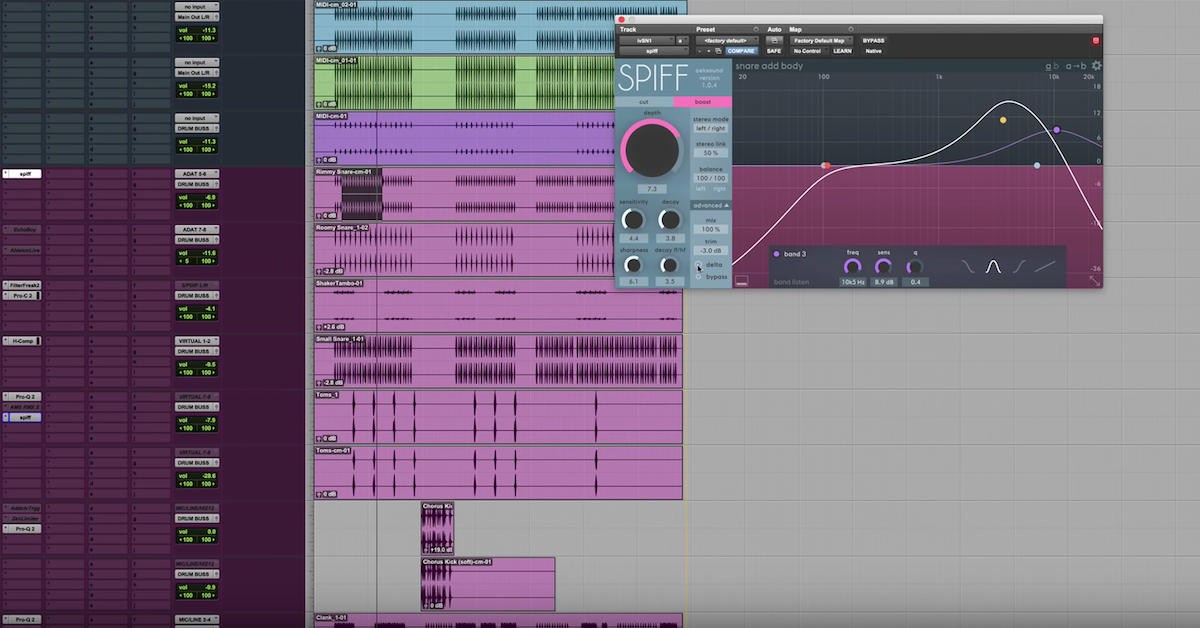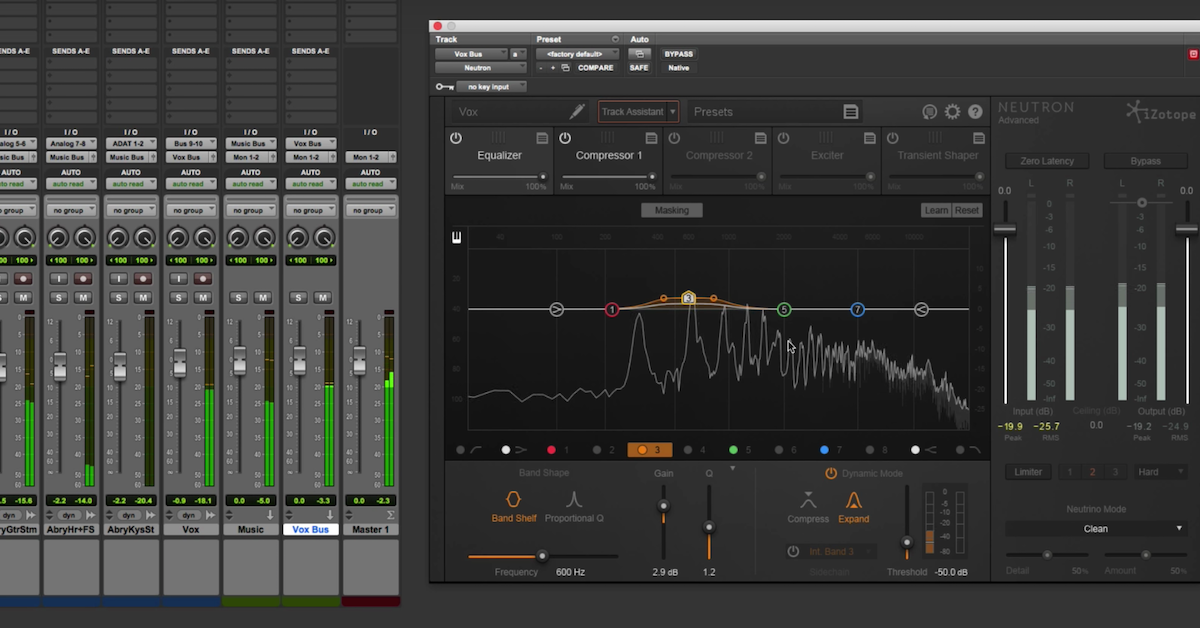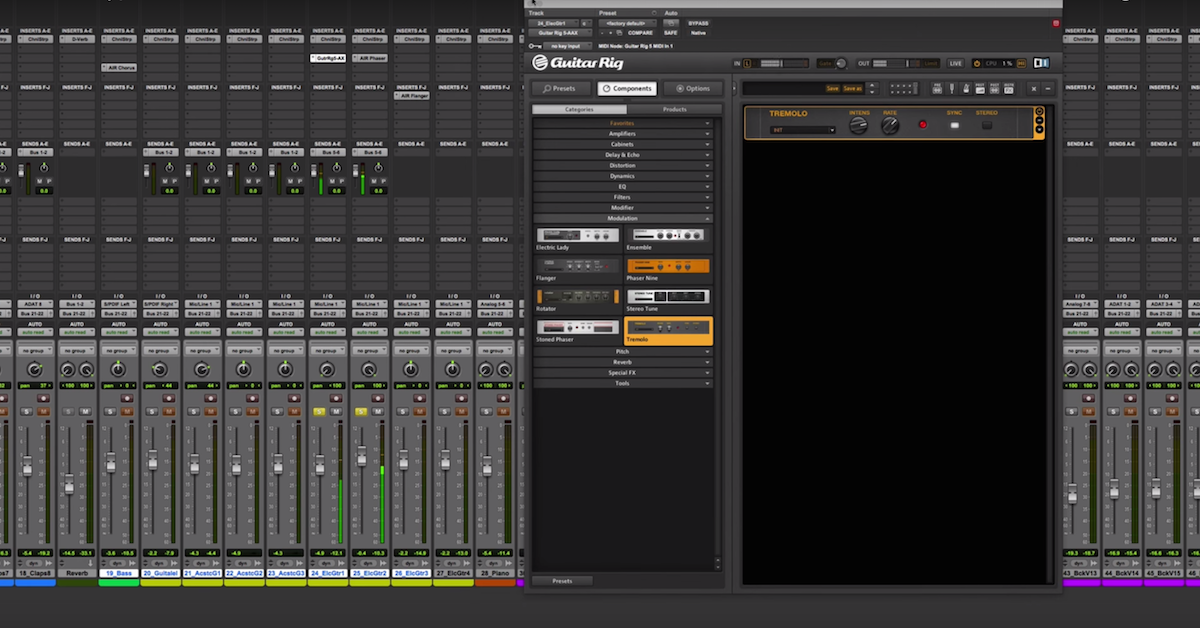How to Tame Harshness in a Mix with oeksound soothe
I wanted to show you a plugin that I’ve been using lately. It’s called, “Soothe,” from oeksound. It is a self-described dynamic equalizer with self adjusting bands, and I find myself using it on individual tracks, busses, and even a little bit during mastering.
The track I’m going to be using is Something Blue by the bad Gilded Lows. Make sure to check them out on iTunes, Spotify, and other places you can stream music.
Alright, let’s get in here. Okay, so let’s have a listen to the entire mix with the vocals in context, and then I will solo the vocals and insert Soothe on them.
[mix]
Okay, so I found that there is some harshness, particularly in the lead vocal. This is what Soothe was made for. Alright, I’m going to solo this lead vocal right here, and what we’ll notice is this is a really beautiful, clean, colorful interface. Nothing distracting at all, and all of the parameters and controls are laid out in a really intuitive, yet simple way. I can’t say enough nice things about how this plugin looks. Let’s talk about how it sounds though.
So we have these individual bands, okay? And as I move up and down the individual bands, you will see that the sensitivity becomes greater or lesser, and as I move them to the left or right, the frequency changes. Okay? We also have bandwidth control, so if you want a tighter Q, you can do that. We also have a global wet/dry control, a couple of other things that we’ll talk about shortly, but for now, I’m just going to hit play, and I want you to see what happens in the plugin interface.
[vocals]
Okay, so if we look down here at the bottom, we see 250, 500, 1kHz, all the way up to 16kHz and above.
What’s happening is as Soothe, dependent on its own algorithm, but also how I use the bands, as Soothe detects harshness, it will attenuate harshness, but it does it in a really interesting dynamic way. If there aren’t inherently harsh frequencies occurring in the vocal, then it will not be affecting the vocal at those times, but once it detects it, it will bring it down, and that’s what we’re seeing here when we have the grey area take over the blue.
Let’s play it one more time.
[vocals]
And now I’m going to use this delta mode, which is really interesting and helpful. What this is going to do is essentially solo what Soothe is attenuating.
[vocals, Soothe solo]
Amazing. So these individual controls here, frequency, bandwidth, and sensitivity, you have per band, and again, visually, it makes a lot of sense. We click on this purple circle, and we see it reflected over here in the knobs. So right now, I am controlling the frequency at which this band starts working, bandwidth, and sensitivity.
We also have these controls over here. Depth, sharpness, and selectivity. Depth is essentially going to tell each band to work harder, and make a more drastic attenuation. If you go to high, it will give you sort of a strange, hyper de-essed sound. You have to think about Soothe as a really powerful, robust de-esser.
I’m going to turn it up all the way, just so you can hear.
[vocals, extreme de-essing with Soothe]
So the depth of attenuation is turned down as you turn down the depth. Makes perfect sense. We also have sharpness here. We are going to see the little individual nodes that are being attenuated become sharper or broader as I turn up the sharpness.
[vocals]
And we also have selectivity. Let’s go ahead and hit play and show you what that does.
[vocals]
As we turn up selectivity, it seems like the overall controls are a little bit more sensitive, and it’s going to attack more individual frequencies of the sound.
We also have an oversampling option. This can prevent aliasing and distortion, and a resolution option as well. This is of course, a very complex process, so you might find your CPU struggling a little bit if you have numerous instances of Soothe all the way on ultra, but in this session, I only have a couple, but my point here is that yes, it works great on vocals, but I am also using it on the drum buss.
So let’s go up here and take a listen to what it’s doing on my drums.
[drums]
Alright. Really subtle. Really interesting. We’ve got a lot of hi-hat, a little bit of the snare, and then especially as it approaches the chorus, we’ve got that big hi-hat hit, and the cymbals, and Soothe is just detecting some harshness, some unwanted frequencies, and attenuating them as it sees fit, depending on how I have the individual bands set.
I even found Soothe to be helpful when mastering. I chose this ear friendly on top master preset. It comes with a bunch of great presets, and then altered it of course dependent on my needs, and really, it’s just going to focus on everything 2kHz and above.
Let’s listen.
[mix]
Let’s go into Delta mode so we can hear what Soothe is doing. Alright, so there’s just a little bit of extra harshness in the snare, the cymbals, the esses, that Soothe is really gently massaging, right? We see this is -6dB. We are hardly ever approaching that. In some cases, we’re doing little increments of decibels, and it is just an incredibly smooth and transparent and natural plugin, and I have found myself using it again on individual tracks, busses, and now mastering.
Guys, make sure to check this plugin out. It is special. Again, this has been Ian Vargo with The Pro Audio Files and masteringinthebox.com. Do yourselves a favor and make sure to look into Soothe by oeksound and Gilded Lows. Thanks!





